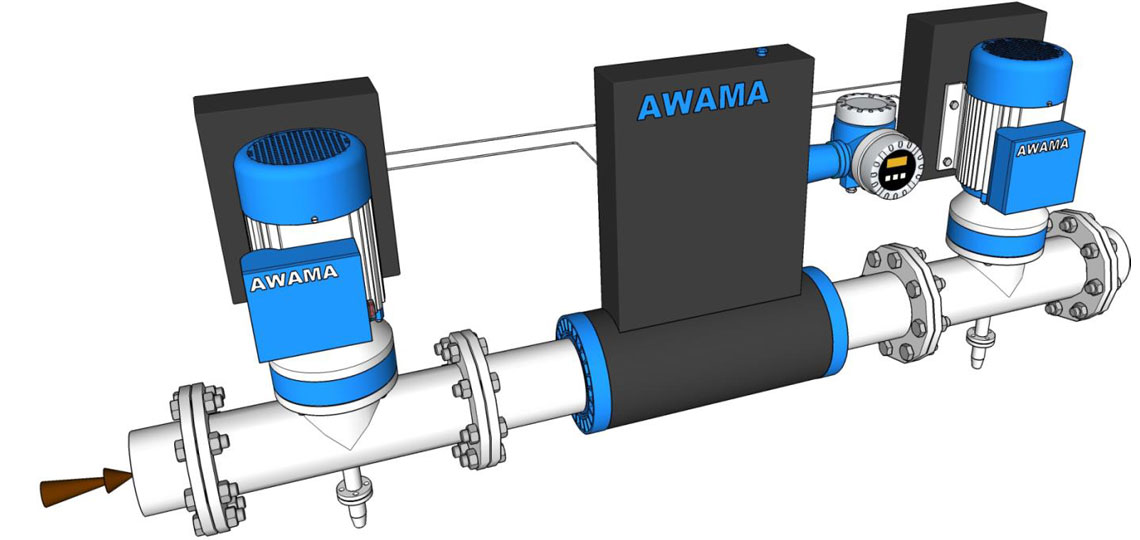One process step in sewage treatment plants involves adding flocculants to sewage sludge after biological treatment, for dehydration of the sludge before disposal. BMA has managed to improve this process considerably.
01.07.2019
Double action
BMA develops system for automated dosing of flocculants
Sludge dehydration using machines is a major cost factor in sewage treatment. To allow for low-cost disposal of the sewage sludge, it needs to be dehydrated as much as possible. The overall cost of disposal depends primarily on the water content of the dehydrated sludge and on the flocculant volume used. Which is why sewage treatment plants aim to reduce the residual moisture of the sludge and flocculant consumption to a minimum.
The right dosing matters
Flocculants are generally long-chain acrylamide-based polymers. They are mixed in with the sludge to obtain a sludge structure that is easier to dehydrate. Because the water removed from the sludge particles flows back from the dehydration units into the treatment plant, it is important that the flocculants stick to the sludge and do not remain in the water. Which is why the flocculant dose has to be adapted to the sludge properties.
However, in many cases, dosing is based on experience only. It is not automated or controlled in any way. This results in a high use of resources, constantly changing sludge quality, and pollution of the treatment plant with acrylamide-based polymers.
New BMA process has many benefits
The double-flocculation process developed by BMA’s Wastewater Management division (AWAMA) involves use of a combined mixer-sensor system before the sewage sludge is dehydrated.
The system improves sewage sludge flocculation with the use of dedicated analysis algorithms and two doses of the polymer. First comes the optical measurement of the flocculation properties, then the automated control of flocculant addition. This ensures high continuity of the process and a consistent sludge quality. The process is thus of major benefit to the treatment plant.
The enormous benefit of the system has been demonstrated in the Wolfenbüttel treatment plant, just a few kilometres from BMA’s head office in Braunschweig. Here, the automated dosing of flocculants was implemented in close collaboration with treatment plant staff and some of BMA’s local partners.
The system’s technical effectiveness could be shown during live operation over a period of six months. Use of polymers was reduced by between 25 and 35 percent, dehydration improved – and cost savings were in fact considerably higher than forecast.
Transfer to industrial setting no problem
The double-flocculation system could also be used in industrial dehydration plants, helping to minimise flocculant use, automate dehydration, and improve dehydration results. Use of the unit ensures greater reliability, by dynamically adapting the polymer volume to changes in sludge quality.

